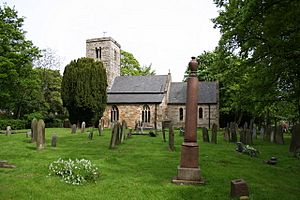Frederick Sowrey facts for kids
Quick facts for kids
Frederick Sowrey
|
|
|---|---|
| Born | 25 August 1893 Twigworth, Gloucestershire, England |
| Died | 21 October 1968 (aged 75) Eastbourne, Sussex, England |
| Allegiance | United Kingdom |
| Service/ |
British Army (1914–18) Royal Air Force (1918–40) |
| Years of service | 1914–1940 |
| Rank | Group captain |
| Unit | Royal Fusiliers No. 39 (Home Defence) Squadron RFC No. 37 (Home Defence) Squadron RFC No. 19 Squadron RFC |
| Commands held | No. 143 Squadron RAF No. 41 Squadron RAF RAF Northolt |
| Battles/wars | First World War Second World War |
| Awards | Distinguished Service Order Military Cross Air Force Cross |
| Relations | Air Marshal Sir Freddie Sowrey (son) |
Frederick Sowrey (born August 25, 1893 – died October 21, 1968) was a brave British pilot and military officer. He became a flying ace during the First World War, which means he shot down many enemy aircraft. He is most famous for his very first victory: taking down a huge German airship called Zeppelin L32 during a bombing raid over England. Frederick Sowrey quickly rose through the ranks and served in the military until 1940.
Contents
Frederick Sowrey: A World War I Flying Ace
Early Life and Joining the Military
Frederick Sowrey was born in Twigworth, England, on August 25, 1893. His mother was Susan M. Sowrey. He was one of three sons of John William Sowrey, who worked for the government.
Frederick was taught at home until he was thirteen. Then, he won a special scholarship to attend King's College School in Wimbledon. He earned a science degree there. He was still studying when the First World War started.
He quickly volunteered to join the army. On August 31, 1914, he became a second lieutenant in the Royal Fusiliers. He went to France as an infantry officer, leading soldiers on the ground. In 1915, he was hurt during the Battle of Loos. After three months in the hospital, he was sent home because of his injuries. However, he soon joined the Royal Flying Corps in December 1915.
Becoming a Royal Flying Corps Pilot
Frederick Sowrey joined No. 39 (Home Defence) Squadron RFC on June 17, 1916. He was appointed a flying officer. This was where he achieved his most famous victory.
Shooting Down the Zeppelin L32
On the night of September 23, 1916, Sowrey took off in his Royal Aircraft Factory BE.2c plane. He was patrolling the sky at 13,000 feet. Around 1:10 AM, he saw the huge German airship, Zeppelin LZ 74 (L 32). This Zeppelin was on a bombing mission over England.
Sowrey flew closer to the Zeppelin. He fired three rounds of special incendiary (fire-starting) bullets into the airship's belly. The Zeppelin then exploded into flames. There were no survivors from the airship's crew. The burning wreckage crashed near Billericay, drawing huge crowds.
For this brave act, Sowrey received the Distinguished Service Order. This important award was officially announced on October 4, 1916. On the same day, he was nominated for a permanent position in the Fusiliers. Soon after, on December 1, he became a flight commander, which meant he was a temporary captain. Later in 1916, he moved to No. 37 (Home Defence) Squadron RFC.
More Victories in the Air
Sowrey went to France for a special duty. While there, he transferred to No. 19 Squadron RFC on June 14, 1917. Over four months, from June to October 1917, he achieved twelve more aerial victories. He shot down planes by himself and with other famous pilots like Alexander Pentland and John Candy.
In total, these twelve victories included six enemy airplanes destroyed and six forced down out of control. For these amazing achievements, he was given the Military Cross on November 23, 1917. This award recognized his "conspicuous gallantry and devotion to duty." It noted that he shot down several enemy planes in less than two months. He also flew very low in two battles to attack and scatter enemy soldiers on the ground.
On January 1, 1918, Sowrey was promoted to squadron leader. This meant that Second Lieutenant Frederick Sowrey, who was acting as a captain, was now a temporary major. On April 4, 1918, he became a lieutenant permanently. He then took command of No. 143 Squadron RAF until the war ended.
After the War: A Long Career
Frederick Sowrey received the Air Force Cross on January 1, 1919. He was given a permanent position in the new Royal Air Force (RAF) with the rank of squadron leader on August 1, 1919.
After the war, Sowrey continued his career. On February 2, 1926, he became the Officer Commanding of No. 41 Squadron RAF. He stayed there until August 31, 1928. For the last eight months of this time, he was also the Station Commander at RAF Northolt. He held this position until January 17, 1929.
Sowrey was promoted from squadron leader to wing commander on July 1, 1928. He retired from the RAF as a group captain on May 26, 1940.


